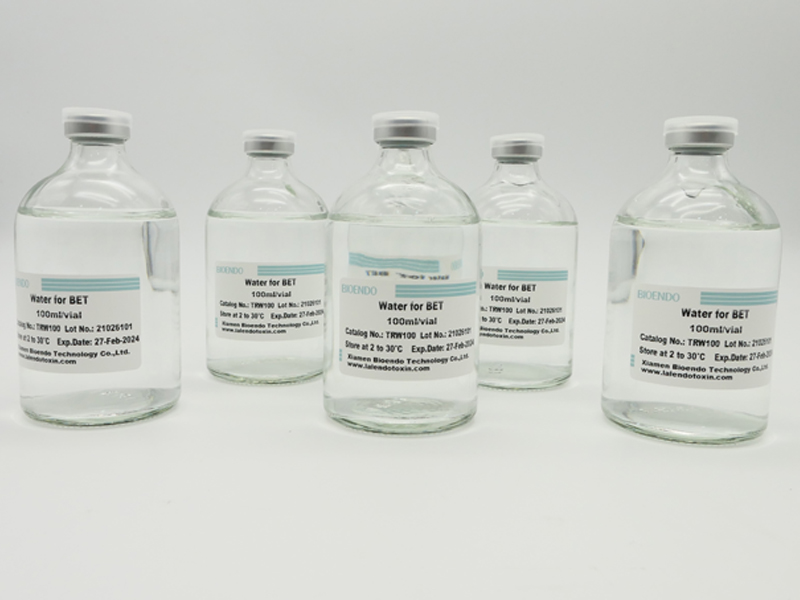Endotoxin-free water plays a critical role in the accuracy and reliability of the endotoxin test assay operation. Endotoxins, also known as lipopolysaccharides (LPS), are toxic substances present in the cell walls of Gram-negative bacteria. These contaminants can cause serious harm to humans and animals if not removed from medical products such as vaccines, drugs, and medical devices.
To detect and quantify endotoxin levels accurately, the endotoxin test relies on a sensitive assay that requires the use of endotoxin-free water. This type of water is treated to remove all traces of endotoxins, ensuring that any positive results generated by the assay are due solely to the presence of endotoxins in the sample being tested, and not a result of contamination from the water.
Using endotoxin-free water also helps to minimize false positive results, which can occur when there are trace amounts of endotoxins in the water used in the assay. This can lead to inaccurate results, potentially causing delays in product release and regulatory issues.
In summary, endotoxin-free water is a crucial component of the endotoxin test assay operation, ensuring the accuracy and reliability of this critical test. By reducing the risk of false positives and ensuring that positive results are only generated in the presence of actual endotoxin contamination, endotoxin-free water plays a pivotal role in ensuring that medical products are safe and effective for use in patients.
Bacterial endotoxin test water
The difference between bacterial endotoxin test water and sterile water for injection: pH, bacterial endotoxin and interference factors.
Bacterial endotoxin test water
The difference between bacterial endotoxin test water and sterile water for injection: pH, bacterial endotoxin and interference factors.
1. pH
The most suitable pH for the reaction between LAL reagent and endotoxin is 6.5-8.0. Therefore, in the LAL test, the United States, the Japanese Pharmacopoeia and the 2015 edition of the Chinese Pharmacopoeia stipulate that the pH value of the test product must be adjusted to 6.0-8.0. The pH value of water for bacterial endotoxin testing is generally controlled at 5.0-7.0; the pH value of sterile water for injection should be controlled at 5.0-7.0. Since most medicines are weakly acidic, the pH value of the water for bacterial endotoxin testing is favorable for the endotoxin test assay or Lyophilized amebocyte lysate test assay.
2. Bacterial Endotoxin
The amount of endotoxin in water for bacterial endotoxin testing should be at least less than 0.015EU per 1ml, and the amount of endotoxin in water for bacterial endotoxin testing in quantitative methods should be less than 0.005EU per 1ml; Sterile water for injection should contain less than 0.25 EU of endotoxin per 1ml.
The endotoxin in the water for bacterial endotoxin test must be low enough that it should not affect the test results. If sterile water for injection is used instead of test water for the Endotoxin test, due to the high endotoxin content in sterile water for injection, sterile water for injection and The superposition of endotoxin in the tested sample may produce false positives, causing direct economic losses to the enterprise. Due to the difference in endotoxin content, it is not possible to use sterile water for injection instead of inspection water for the endotoxin test assay or Lyophilized amebocyte lysate test assay.
3. Interference Factors
The water for bacterial endotoxin testing must not interfere with the LAL reagent, control standard endotoxin and LAL test; there is no requirement for sterile water for injection. Sterile water for injection requires safety and stability, but will sterile water for injection affect the activity and stability of bacterial control standard endotoxin? Does Sterile Water for Injection Enhance or Inhibit the endotoxin Test? Few people have done long-term research on this. It has been verified through investigation that some sterile water for injection has a strong inhibitory effect on the LAL test. If sterile water for injection is used instead of test water for the LAL test, false negatives may occur, resulting in missed detection of endotoxin, which directly threatens the safety of medication. Due to the existence of interference factors of sterile water for injection, it is not possible to use sterile water for injection instead of inspection water for the LAL test.
If the accuracy of washing water, washing method and test water can be ensured, the possibility that the positive control in the Limulus test cannot be established basically does not exist, unless the standard used is not standardized. In order to ensure the accuracy of the test results, we must:
a. Familiar with standards and industry norms;
b. Use qualified products and standard products;
c. Operate in strict accordance with the operating procedures.
Post time: Jul-26-2023



